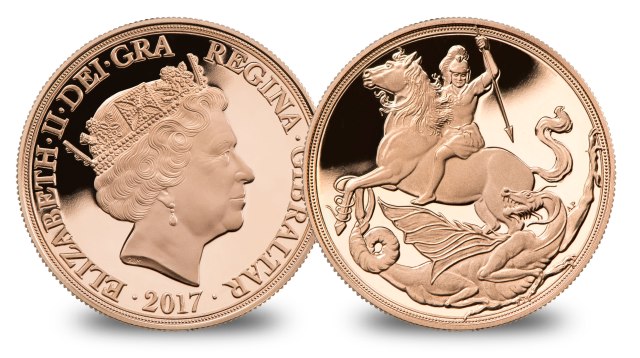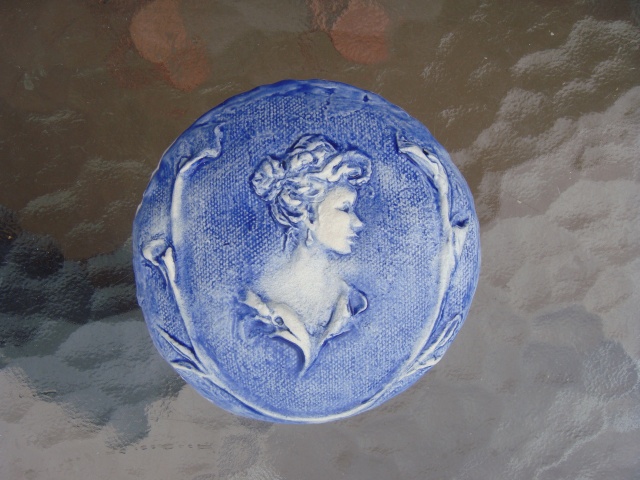The New Gold Sovereign that took the Berlin World Coin Fair by Storm
To RESERVE YOUR own click here:
The New Gold Sovereign that took the Berlin World Coin Fair by Storm
To RESERVE YOUR own click here:


I am honored to present the coin that I have been working on over the past 2 years and the reason I attended the Istituto Poligrafico Zecca Stato at the Scuola dell’Arte della Medaglia in Roma, Italy this past year. In association with the London Mint Office I have designed the Newly anticipated Gold Sovereign 2017 Saint George and the Dragon on its 200th Anniversary from the original by Benedetto Pistrucci. I am honored to share with everyone my heritage and the story of my ancestors. I am overwhelmed with excitement to bring this coin to the world.
-Angela Benita Pistrucci
As an artist your talent and creative ability comes from somewhere. We are all unique and different but as much as our genetics doesn’t have anything to do with who we are it can also have very much to do with who we are. In researching my family history I was not only surprised but amazed at the some of the similiarities in their artwork and mine. I love to do portraiture, cameo’s, sculpture, drawing and figurative.

Bettina Pistrucci Portrait Cameo by Angela Pistrucci
The artists in my background were figurative realists in both painting and sculpture. Most notable ancestors are Benedetto Pistrucci a sculptor that worked in the Royal British Mint, his brother Phillipe Pistrucci a printmaker closely associated with Dante Gabrielle Rosetti ( He is known for his painting of Dante’s sister Christina Rosetti -a poet), my great great grandfather E.J. Cobbett was a member of the Royal British artists and William Cobbett (famous for his writing and member of England’s parliament mid 1800’s). I am not saying that I have arrived but to say the least I am proud of my heritage and am influenced everyday by the legacy left by my ancestors. Trust me somedays it feels like a lot to live up to.
Benedetto Pistrucci (May 29, 1783 – September 16, 1855) was a talented engraver of gemstones, cameos, coins and medals.
Born in Italy, he moved to London in 1815 and was employed at the Royal Mint as an engraver, where his most famous work is his portrayal of St. George & the Dragon used on British gold sovereigns and crowns from 1817 to the present day. He also engraved the dies for many other coins, medals, and medallions, including the Waterloo Medal, which took him over thirty years to complete.
He refused to copy the work of any other artist or engraver, and insisted that all his work was his own original work. Because of his Italian origin, he was not officially recognised as the chief engraver at the Royal Mint, and there were rivalries with other engravers including the Wyon family.
To immortalize the successful Waterloo campaign, the Duke of Wellington suggested that a couple of special medals be prepared. From a July 11, 1815, letter from Master of the Mint W.W. Pole to the president of the Royal Academy:
“I have been commanded to strike two Medals at the Royal Mint in commemoration of the battles of Les Quatre Bras and Waterloo; One, in gold, of the largest size, to embrace the exploits of the allied army under the Duke of Wellington the Prince of Orange and the Duke of Brunswick, and of the Prussian Army under Field Marshal Blucher. This Medal will probably be given to each of the sovereigns in alliance with the Prince Regent, to their ministers and generals.”
Medallists were petitioned to submit designs for the medal. Pistrucci’s design was selected over a design by John Flaxman, which had been recommended by the Royal Academy. However, due to an internal strife at the Royal Mint between Pistrucci, Pole, and Wyon regarding the position of chief engraver, work on the medal got off to a slow start. Ongoing personality conflicts within the Royal Mint, salary disputes, a heavy workload, and the utter complexities of the proposed design were all contributing factors as to why it took Pistrucci 33 years to complete his masterpiece. In 1849 the dies were reportedly finished, but only in terms of design execution. Although the dies were created in four pieces to assist in their hardening, it seems that nobody was willing to take the risk of damaging Pistrucci’s work that was three decades in the making. Unfortunately, by this time all of the intended recipients of the medal were deceased, with the exception of Wellington. Gutta-percha impressions and electrotypes were finally created. Pistrucci was finally able to see his magnum opus in medal form. He died a few years later, in 1855. See: Heritage Auction Galleries, Sept 16 2008 auction of electrotype medal, copyright acknowledged.
Pistrucci is buried in Virginia Water, Surrey, England at Christ Church. He has a prominent gravestone which cites his title as Her Majesty’s “Chief Medallist”. His grave is situated at the front of the Church under a tree.
E.J. Cobbett : Painting
Painting
Porcupines Gazette by William Cobbett – The ‘ blog of the 18th century!!!! ‘